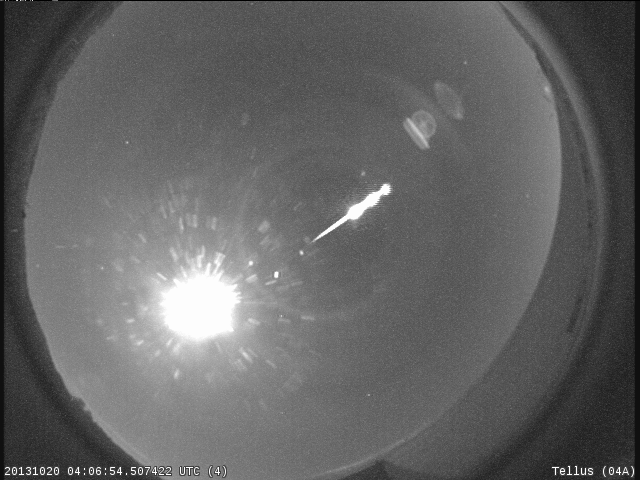
ST. GEORGE — The first of two meteor showers set to showcase this month, the Taurid meteor shower, will light up the sky with a swarm of snowy dirtballs during its peak Thursday night. This meteor shower will be followed by the Leonids, which will feature fast-moving fireballs moving at more than 150,000 mph.

The Taurids is an annual meteor shower that has been broken down into two streams known as the Southern Taurids and the Northern Taurids. Some scientists believe it was the giant planet Jupiter that disrupted the trailing meteors which broke it up into two streams, according to Inverse Science.
The Southern Taurid meteor shower can be seen high in the night sky in the constellation Taurus, just above the horizon. The best time to see the shower at its peak is from midnight on Thursday into the early morning hours of Friday.
Due to the Earth’s current rotation, St. George is currently facing towards the direction of the incoming meteors, which increases the number of meteors raining down vertically and produces the short trails that are visible closest to the radiant point, In The Sky says.
The Northern Taurid meteor shower is set to peak Nov. 11-12 and can be seen high in the sky without a competing moon to mask the fainter meteors.
These events can be seen with the naked eye, although some may be better enjoyed with a telescope or good pair of binoculars.
And this year, sky gazers are in for a special show, as a higher number of these Taurid fireballs, known as a “swarm,” are expected to shoot across the sky, a phenomenon that occurs every seven years or so, according to scientists at NASA.
The Taurids are created when Earth moves into a group of the fragments trailing the “Enke” comet, and then burn up in the atmosphere, and while these showers are not as active as other meteor showers, what they lack in numbers they make up for in brightness and brilliance.

Comet Encke is roughly 3 miles in diameter and was the second comet recognized as a periodic, meaning it makes a return trip toward Earth.
The comet returns every 3.3 years and orbits within 16 million miles of Earth’s surface. The first periodic comet discovered was the infamous Halley’s Comet, which only crosses paths with the Earth every 67 years, according to Inverse Science.
There is a second annual meteor shower, the Leonid meteor shower, which will peak in the early morning hours of Nov. 17, just before dawn, and is known to produce about a dozen meteors per hour. The Leonids can bring about a dozen meteors per hour.
Known for their fireballs and earth grazing meteors, the Leonids are one of the more prolific annual meteor showers that shoot fast, bright meteors that originate from the Comet Tempel-Tuttle, with a radiant point located in the constellation Leo the Lion.
Earth grazers are meteors that enter Earth’s atmosphere and then quickly exit, sometimes exploding in mid-air. These radiant flying snowballs are also fast and shoot across the sky at more than 43 miles per second, which is roughly 154,000 mph.
According to NASA, every 33 years, or so, skywatchers are treated to a Leonid storm that can peak with hundreds to thousands of meteors produced per hour. The last Leonid meteor storm took place in 2002.
Comets: friend or foe?
Comets were considered bad omens throughout recorded history, and many ancients were stricken with dread when they saw a comet streaking across the sky. Many believed the sudden appearance of these fireballs caused disruption across the heavens and were thought to bring about crop failures, diseases and even the death of royalty, among other catastrophic events, Phys.org says.
Some of the earliest comet observations were recorded by the Chinese on oracle bones.
Today, comets are no longer considered harbingers of doom, but instead, they are believed to be the record-keepers of the conditions present when the solar system was first formed since these celestial bodies change very little over time.
Copyright St. George News, SaintGeorgeUtah.com LLC, 2021, all rights reserved.